Metallic material
Innovation | Professionalism
Integrity | Efficiency
Metallic material
Innovation | Professionalism
Integrity | Efficiency
A rear anti-collision beam, also known as a rear bumper beam or rear impact bar, is an essential component of a vehicle's rear-end collision protection system. It is a metal bar located behind the rear bumper and is designed to absorb and dissipate the energy generated during a rear-end collision, thereby reducing the force of impact transferred to the vehicle's occupants.
The rear anti-collision beam is typically made of steel or aluminum and is bolted to the vehicle's frame or body. It is engineered to withstand various types of impact forces and to distribute the energy evenly throughout the vehicle's structure, thus minimizing damage to the vehicle's rear end.
In addition to its impact-absorbing function, the rear anti-collision beam also serves as a mounting point for other rear-end components such as the rear bumper cover and taillights. It is an integral part of the vehicle's overall design and plays a crucial role in protecting the occupants during a rear-end collision.

Martensitic steel is a type of steel that is characterized by its high strength and hardness. This steel is obtained by quenching the steel after cold rolling and continuous annealing, which results in the formation of a large amount of martensite structure. Martensite is a type of crystal structure that is formed during the cooling process of steel. It is a very hard and brittle structure that provides high strength to the steel.
The process of obtaining martensitic steel involves heating the steel to a high temperature and then rapidly cooling it by quenching it in a liquid such as water or oil. This rapid cooling process prevents the steel from undergoing the usual slow cooling process in the instead Austenitic structure, resulting in the formation of a high concentration of martensite.
The main organization of martensitic steel is lath martensite. Lath martensite is a specific form of martensite that is characterized by a lath-like structure. This structure is formed when the steel is rapidly cooled from a high temperature, causing the austenitic structure to transform into the martensitic structure. The lath martensitic structure is responsible for the high strength and hardness of martensitic steel.
| Grade | YS(MPa) | TS(MPa) | EL(%) | r | n | BH2(MPa) |
| HC1350/1700MS | 1350-1700 | ≥1700 | ≥3% | - | - | - |
Grade: HC1350/1700MS
C(max): 0.35
Mn(max): 3
Si(max): 1
The Rear Crash Absorption Box for Bumper Beam is an important auto part that is designed to absorb impact and minimize damage during rear-end collisions. It is typically located behind the rear bumper and is made from a combination of materials, such as steel and plastic, to provide both strength and flexibility.
During a rear-end collision, the Rear Crash Absorption Box for Bumper Beam absorbs the energy of the impact and redirects it away from the passengers and the vehicle's frame. This helps to prevent damage to the vehicle's body and reduces the risk of injury to the occupants.
In addition to its protective function, the Rear Crash Absorption Box for Bumper Beam also helps to improve the overall aerodynamics of the vehicle, which can enhance its performance and fuel efficiency.

Low-alloy high-strength steel is a type of steel that contains small amounts of alloying elements such as niobium, titanium, and vanadium. These elements are added singly or in combination to low-carbon steel to form carbon and nitrogen compound particles for precipitation . These particles help to strengthen the steel, making it more durable and resistant to deformation.
In addition to strengthening the steel, microalloying elements also refine the grain structure of the steel. This refinement leads to a more uniform distribution of the alloying elements and helps to prevent the formation of large, brittle grains. The result is a steel that is both Strong and ductile, meaning it can withstand high levels of stress without breaking or deforming.
One of the advantages of low-alloy high-strength steel is its good weldability. This means that it can be easily welded without compromising its strength or durability. This makes it a popular choice for applications where welding is necessary, such as in the construction of bridges, buildings, and pipelines.
The microstructure of low-alloy high-strength steel is typically composed of ferrite and a small amount of carbide. Ferrite is a type of iron that is relatively soft and ductile, while carbide is a hard, brittle compound that contains carbon and other elements. The combination of these two materials results in a steel that is strong, ductile, and highly resistant to deformation and wear.
| Grade | YS(MPa) | TS(MPa) | EL(%) | r | n | BH2(MPa) |
| HC340LAD+Z | 340-420 | 410-510 | ≥21% | - | - | - |
Grade: HC340LAD+Z
C(max): 0.11
Mn(max): 1
Si(max): 0.5
Our company: Hengqiao(Shanghai) International Trading Limited
The company's main business is general GMW standard, Fiat EFE standard, Volvo VDA standard, Nissan NEN standard, Volkswagen VW50065, Ford WSS-M and other standard series of automotive steel.
Looking forward to your inquiry!

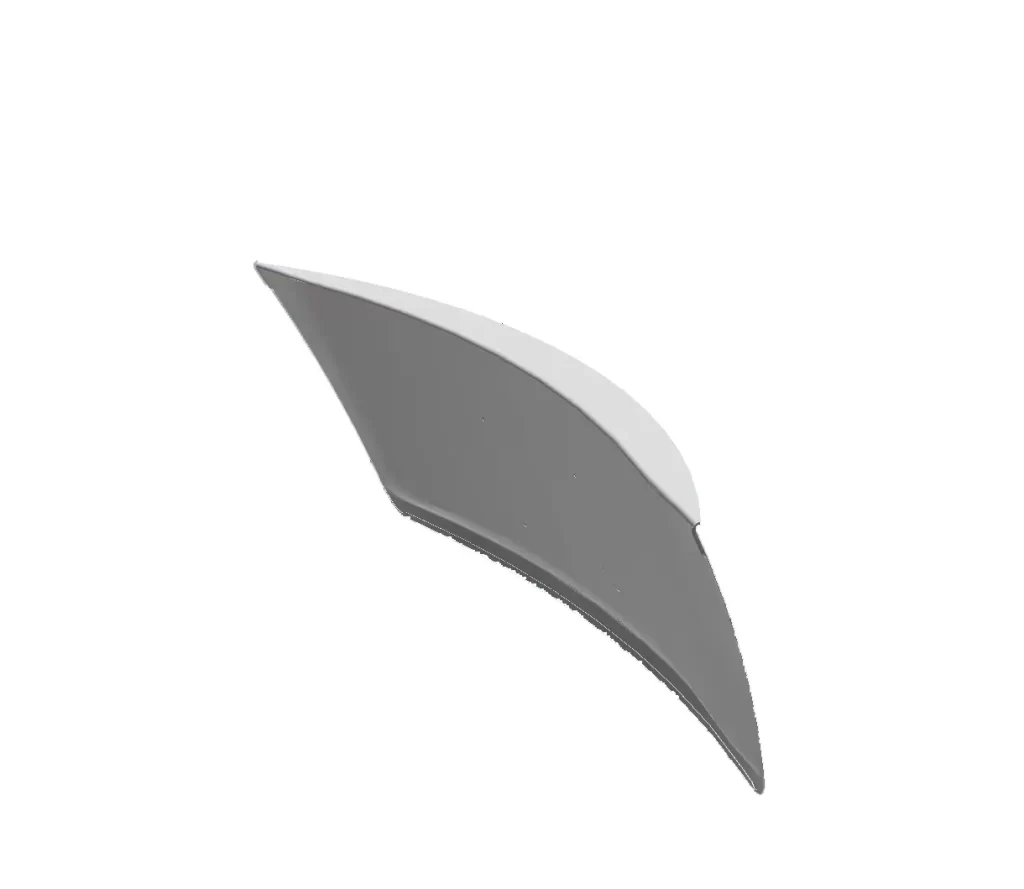
The trunk lid outer panel is an essential component of the trunk assembly in a vehicle. It is the exterior panel that covers the entire trunk compartment and provides access to it. The trunk lid outer panel is usually made of sheet metal or aluminum and is designed to withstand impact, corrosion, and other forms of wear and tear.
The trunk lid outer panel is typically attached to the vehicle's body using hinges, bolts, and other hardware. It is also connected to the trunk latch mechanism, which allows it to be opened and closed. The trunk lid outer panel may also have a keyhole or a push-button release that enables the driver or the passenger to open it from outside the vehicle.
The design of the trunk lid outer panel varies depending on the make and model of the vehicle. Some may have a smooth and sleek appearance, while others may have a more angular or textured surface. Many newer vehicles also feature integrated spoilers or other design elements that are incorporated into the trunk lid outer panel.
Bake-hardened steel is a type of steel that gains its strength and hardness through a combination of carbon and nitrogen atoms. Strengthening elements such as phosphorus and manganese are also added to the steel to form solid solutions that prevent dislocation movement, thereby increasing its strength and hardness.
After shaping, the steel undergoes age hardening by heating it to a specific temperature and holding it there for a certain period. During this process, small particles precipitate in the steel, further enhancing its strength.
Bake-hardened steel is widely used in applications that require high durability and strength, such as automotive outer coverings. The steel typically has a ferrite microstructure, which is ductile but can be hardened through the addition of other elements and heat treatment. However, excessive carbon can make the steel brittle and reduce its overall strength.
| Grade | YS(MPa) | TS(MPa) | EL(%) | r | n | BH2(MPa) |
| HC220BD+Z | 220-280 | 340-400 | ≥32% | ≥1.2 | ≥0.15 | ≥30 |
| HC220BD+ZF | 220-280 | 340-400 | ≥30% | ≥1 | ≥0.15 | ≥30 |
Grade: HC220BD+Z, HC220BD+ZF
C(max): 0.06
Mn(max): 1
Si(max): 0.5
The trunk lid inner panel is an essential component of the trunk assembly in a vehicle. It is located on the inside of the trunk lid and is designed to provide structural support and protection to the trunk lid.
It is designed to fit precisely within the contours of the trunk lid and provides a smooth and even surface for the exterior finish of the vehicle.
The trunk lid inner panel is also an important component for sound and vibration insulation. It helps to reduce the noise level inside the vehicle by absorbing sound waves and preventing them from bouncing around the trunk.
Another important function of the trunk lid inner panel is to provide protection to the occupants of the vehicle in case of a rear-end collision. It helps to distribute the force of the impact across the entire trunk lid and prevent the occupants from being injured.
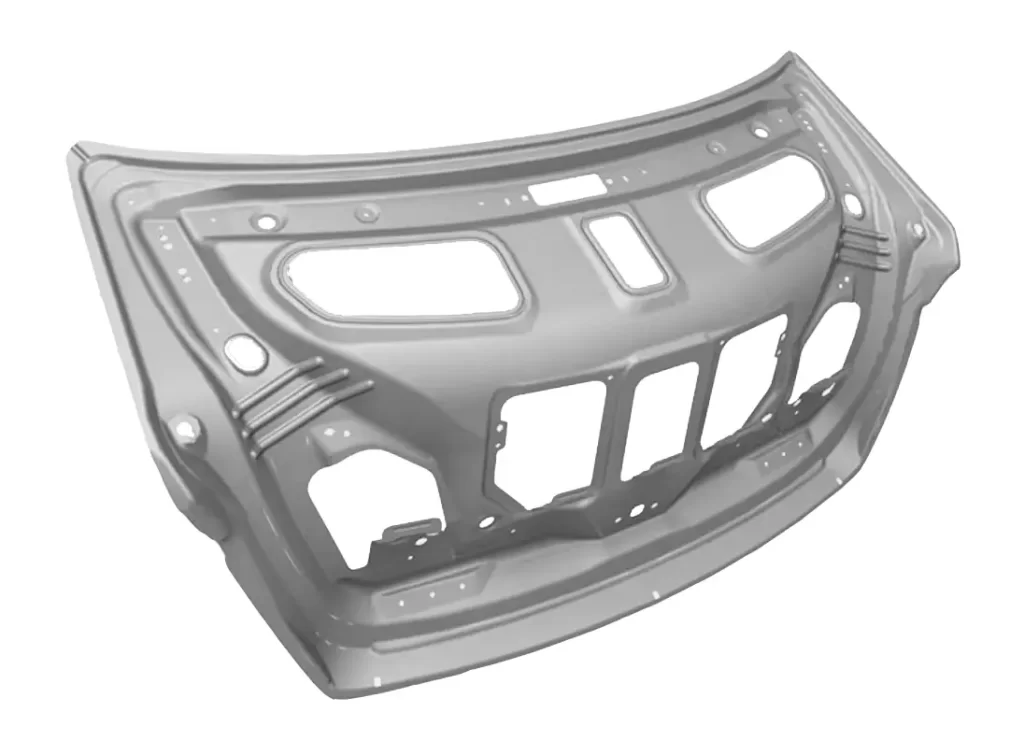
Mild steel is a commonly utilized form of steel that possesses favorable properties for a wide range of applications. It can be categorized into two types: regular low-carbon steel and interstitial atom-free steel. The microstructure of mild steel is typically composed of ferrite, a soft and ductile type of iron crystal. Low-carbon steel may also have trace amounts of pearlite, a blend of ferrite and cementite.
Despite its low strength and hardness, mild steel is highly regarded for its welding and stamping characteristics. Its low carbon content allows for easy shaping and manipulation, which makes it a favored option for various industrial uses. Moreover, interstitial-free steel is particularly adept at producing intricate and deeply drawn components, such as door inner panels, body side panels, fuel tanks, and floor parts.
| Grade | YS(MPa) | TS(MPa) | EL(%) | r | n | BH2(MPa) |
| DC53D+Z-T | 140-220 | 270-380 | ≥30% | - | - | - |
Grade: DC53D+Z-T
C(max): 0.12
Mn(max): 0.6
Si(max): 0.5
Our company: Hengqiao(Shanghai) International Trading Limited
The company's main business is general GMW standard, Fiat EFE standard, Volvo VDA standard, Nissan NEN standard, Volkswagen VW50065, Ford WSS-M and other standard series of automotive steel.
Looking forward to your inquiry!
Fenders are an essential component of an automobile that protect the vehicle and its occupants from dirt, debris, and water splashes generated by the tires. They are located on both sides of the automobile, covering the wheel well area and extending to the front and rear of the vehicle.
Fenders are typically made of sheet metal, plastic or fiberglass materials, and can be painted to match the color of the vehicle. Some modern vehicles feature fenders made of lightweight materials such as aluminum, which can help reduce the overall weight of the vehicle and improve fuel efficiency.
In addition to providing protection, fenders also play a role in the aerodynamics of the vehicle. They are designed to channel air away from the wheels and reduce air resistance, which can improve the vehicle's overall efficiency and performance.

Bake-hardened steel is a type of steel that gains its strength and hardness through a combination of carbon and nitrogen atoms, along with the addition of strengthening elements such as phosphorus and manganese. These elements form solid solutions within the steel that prevent the movement of dislocations, leading to increased strength and hardness.
Once the steel has been shaped, it undergoes age hardening, which involves heating it to a specific temperature and holding it there for a certain duration. This process allows for the precipitation of small particles in the steel, further enhancing its strength.
Bake-hardened steel is commonly used in applications that require high durability and strength, such as automotive outer coverings. The steel typically has a ferrite microstructure, which is soft and ductile but can be hardened through the addition of other elements and heat treatment. However, excessive carbon can make the steel brittle and reduce its overall strength.
| Grade | YS(MPa) | TS(MPa) | EL(%) | r | n | BH2(MPa) |
| HC220BD+Z | 220-280 | 340-400 | ≥32% | ≥1.2 | ≥0.15 | ≥30 |
| HC220BD+ZF | 220-280 | 340-400 | ≥30% | ≥1 | ≥0.15 | ≥30 |
Grade: HC220BD+Z, HC220BD+ZF
C(max): 0.06
Mn(max): 1
Si(max): 0.5
Our company: Hengqiao(Shanghai) International Trading Limited
The company's main business is general GMW standard, Fiat EFE standard, Volvo VDA standard, Nissan NEN standard, Volkswagen VW50065, Ford WSS-M and other standard series of automotive steel.
Looking forward to your inquiry!
The engine hood cover panel, also known as the hood or bonnet, is an essential component of a vehicle that covers and protects the engine compartment. It is usually located at the front of the vehicle and is designed to provide easy access to the engine for routine maintenance and repairs. The hood also plays a crucial role in protecting the engine and other vital components from external elements such as dirt, debris, and rainwater.
Engine hood cover panels are typically made of lightweight and durable materials such as aluminum, steel, or fiberglass. Some modern car models also use composite materials like carbon fiber reinforced polymer (CFRP) to reduce weight and improve fuel efficiency.
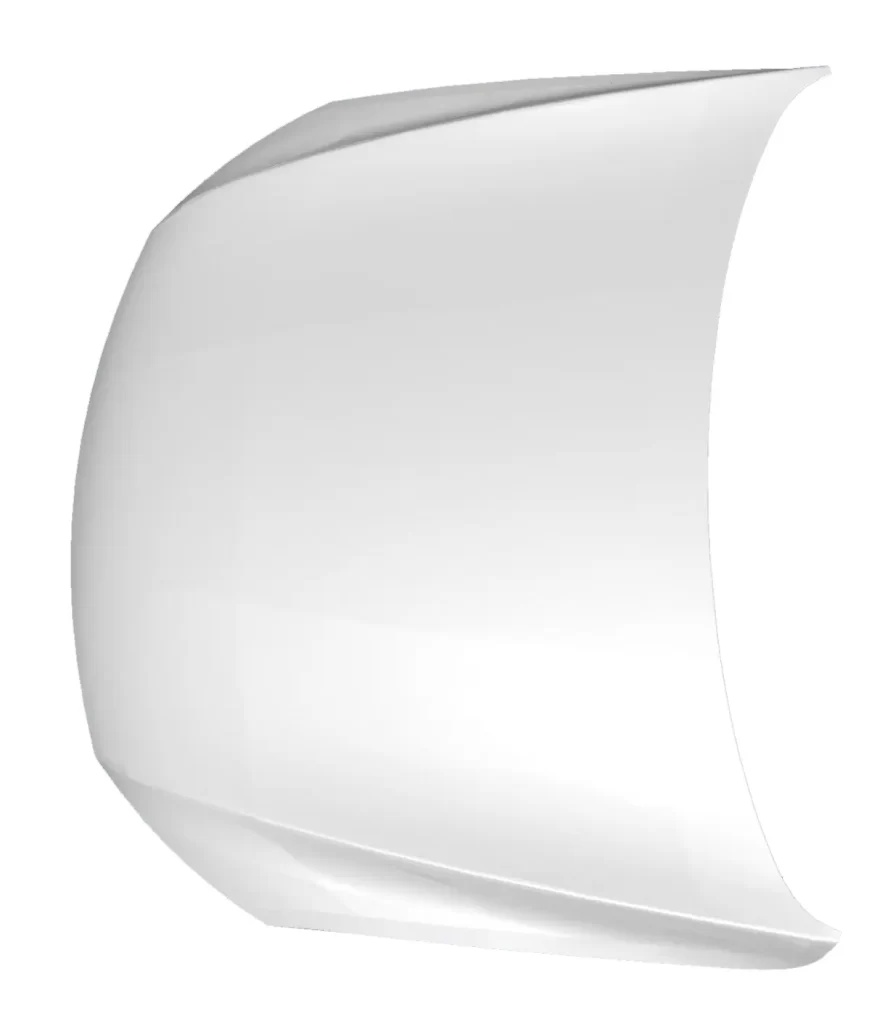
Bake-hardened steel is a type of steel that is strengthened through a combination of factors, including the presence of carbon and nitrogen atoms, as well as the addition of strengthening elements like phosphorus and manganese. These elements can form solid solutions within the steel that inhibit the movement of dislocations, resulting in increased strength and hardness.
After the steel has been formed into its desired shape, it undergoes a process known as age hardening, which involves heating the steel to a specific temperature and holding it there for a period of time. This allows for the precipitation of small particles within the steel, further strengthening the material.
Bake-hardened steel is commonly used in applications where high strength and durability are required, such as automotive outer coverings. The steel typically has a ferrite microstructure, which is relatively soft and ductile but can be hardened through the addition of other elements and heat treatments. However, excessive amounts of carbon can make the steel brittle and decrease its overall strength.
| Grade | YS(MPa) | TS(MPa) | EL(%) | r | n | BH2(MPa) |
| HC220BD+Z | 220-280 | 340-400 | ≥32% | ≥1.2 | ≥0.15 | ≥30 |
| HC220BD+ZF | 220-280 | 340-400 | ≥30% | ≥1 | ≥0.15 | ≥30 |
Grade: HC220BD+Z, HC220BD+ZF
C(max): 0.06
Mn(max): 1
Si(max): 0.5
Our company: Hengqiao(Shanghai) International Trading Limited
The company's main business is general GMW standard, Fiat EFE standard, Volvo VDA standard, Nissan NEN standard, Volkswagen VW50065, Ford WSS-M and other standard series of automotive steel.
Looking forward to your inquiry!
The back door outer panel is a component of a vehicle's rear hatch or trunk that provides structural support, protects the inner components of the door, and helps maintain the aerodynamics of the vehicle. It is typically made of steel, aluminum, or other durable materials that can withstand impacts and resist corrosion.
The back door outer panel is designed to fit precisely with the rest of the rear hatch or trunk components and may include features like mounting points for hinges, latches, and other hardware. If the back door outer panel is damaged, it can compromise the integrity of the rear hatch or trunk, making it difficult to open or close properly and affecting the safety of the vehicle's occupants in the event of a collision.
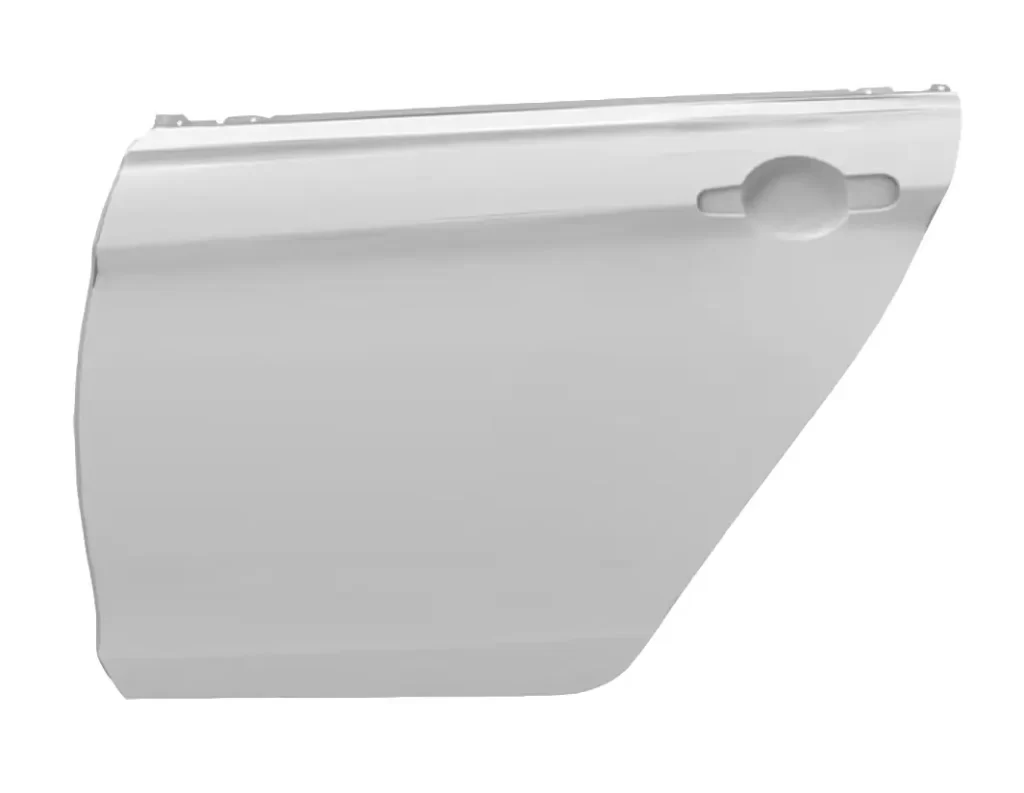
The strength of steel is influenced by several factors, including the presence of carbon and nitrogen atoms, which can form solid solutions within the steel. These atoms can increase the strength of the steel by reducing the movement of dislocations, which are defects in the crystal structure of the metal. However, excessive amounts of carbon can also make the steel brittle.
To further enhance the strength of steel, strengthening elements such as phosphorus and manganese can be added. These elements can form interstitial solid solutions with the iron atoms, leading to an increase in the hardness and strength of the steel.
Once the steel has been processed and formed into its desired shape, it is typically baked at a specific temperature to further increase its strength through a process known as age hardening. During age hardening, the steel is heated to a specific temperature and held there for a period of time. This allows for the precipitation of small particles within the steel that act to inhibit the movement of dislocations, further increasing the strength of the material.
Steel that has undergone this process is commonly used in automotive outer coverings, which require high strength and durability. The organization of the steel is typically ferrite, a type of iron that is relatively soft and ductile, but can be hardened through the addition of other elements and heat treatments.
| Grade | YS(MPa) | TS(MPa) | EL(%) | r | n | BH2(MPa) |
| HC220BD+Z | 220-280 | 340-400 | ≥32% | ≥1.2 | ≥0.15 | ≥30 |
| HC220BD+ZF | 220-280 | 340-400 | ≥30% | ≥1 | ≥0.15 | ≥30 |
Grade: HC220BD+Z, HC220BD+ZF
C(max): 0.06
Mn(max): 1
Si(max): 0.5
The rear door outer panel reinforcement plate is a specific type of auto part that is designed to provide additional strength and protection to the outer panel of the rear door of a vehicle. It is typically made from durable materials, such as steel or aluminum, and is designed to withstand the harsh elements and the wear and tear of regular use.
In addition to its structural function, the rear door outer panel reinforcement plate can also provide added security for the vehicle. By strengthening the outer panel of the rear door, it can help to deter potential theft or damage.
Overall, the rear door outer panel reinforcement plate is an important auto part that helps to ensure the safety, durability, and security of a vehicle.

The microstructure of a material refers to the arrangement of its constituent particles or grains, and in this particular case, the material being referred to consists mainly of ferrite and martensite. The martensite structure is dispersed in the ferrite in the form of islands on the substrate, which means that the martensite forms small, isolated regions within the larger ferrite structure.
Dual phase steels are a type of steel that have been specifically designed to have a microstructure consisting of both ferrite and martensite. This microstructure gives them several desirable properties, including a low yield ratio and a high work hardening exponent. The yield ratio refers to the ratio of the yield stress to the tensile strength of a material, and a low yield ratio indicates that the material can undergo more deformation before it reaches its yield point. The work hardening exponent measures how much a material's strength increases as it is deformed, and a high work hardening exponent indicates that the material can be easily formed into complex shapes.
In addition to these properties, dual phase steels also exhibit a phenomenon known as bake hardening, which refers to an increase in strength that occurs when the material is heated and then cooled. This makes them ideal for use in automotive structural parts, as these parts need to be able to withstand high levels of stress and deformation without failing.
| Grade | YS(MPa) | TS(MPa) | EL(%) | r | n | BH2(MPa) |
| HC340/590DPD+Z | 290-370 | ≥500 | ≥27% | - | ≥0.15 | - |
Grade: HC340/590DPD+Z
C(max): 0.15
Mn(max): 2.5
Si(max): 0.6
The rear door anti-collision beam is an automotive part that is designed to provide additional protection to the rear of a vehicle in the event of a collision. It is typically installed on the rear doors of a vehicle and is constructed of heavy-duty materials such as steel.
The purpose of the rear door anti-collision beam is to absorb the impact of a collision, distributing the force of the impact across a wider area and minimizing the damage to the vehicle. In particular, it helps to protect the rear passengers of the vehicle from injury by absorbing the energy of a rear-end collision.
In addition to its safety benefits, the rear door anti-collision beam can also provide added structural support to the rear of the vehicle. This can help to improve the overall durability and longevity of the vehicle.

The microstructure of a material refers to the arrangement of its constituent particles or grains, and in this particular case, the material being referred to consists mainly of ferrite and martensite. The martensite structure is dispersed in the ferrite in the form of islands on the substrate, which means that the martensite forms small, isolated regions within the larger ferrite structure.
Dual phase steels are a type of steel that have been specifically designed to have a microstructure consisting of both ferrite and martensite. This microstructure gives them several desirable properties, including a low yield ratio and a high work hardening exponent. The yield ratio refers to the ratio of the yield stress to the tensile strength of a material, and a low yield ratio indicates that the material can undergo more deformation before it reaches its yield point. The work hardening exponent measures how much a material's strength increases as it is deformed, and a high work hardening exponent indicates that the material can be easily formed into complex shapes.
In addition to these properties, dual phase steels also exhibit a phenomenon known as bake hardening, which refers to an increase in strength that occurs when the material is heated and then cooled. This makes them ideal for use in automotive structural parts, as these parts need to be able to withstand high levels of stress and deformation without failing.
| Grade | YS(MPa) | TS(MPa) | EL(%) | r | n | BH2(MPa) |
| HC820/1180DPD+Z | 820-1150 | ≥1180 | ≥6% | - | - | - |
Grade: HC820/1180DPD+Z
C(max): 0.23
Mn(max): 3
Si(max): 1
The rear door triangle glass support board is an automotive part that is used to support the triangular piece of glass that is typically found in the rear doors of certain vehicles, such as SUVs or minivans. It is typically made from a durable material such as plastic or metal, and is designed to securely hold the glass in place.
The purpose of the rear door triangle glass support board is to provide additional structural support to the rear door and help to keep the glass securely in place. This is important for both safety and functionality, as a loose or improperly supported piece of glass could pose a hazard to both the driver and passengers of the vehicle.
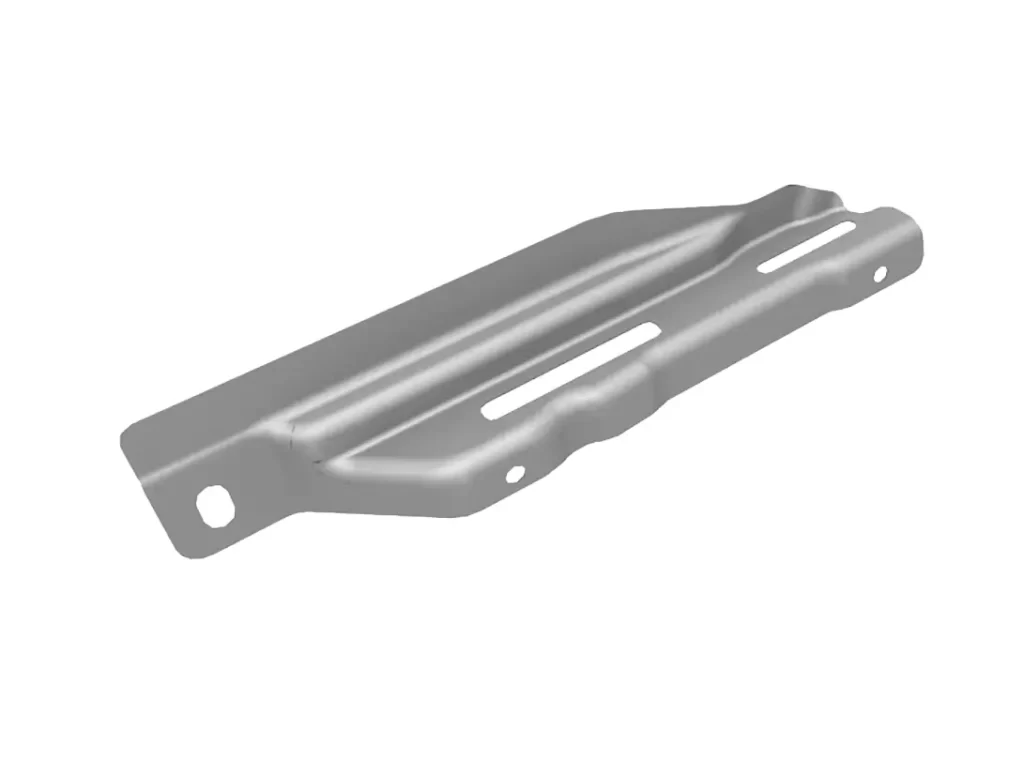
Carbon structural high-strength steel is a specific type of steel that is used in a variety of applications, including automotive manufacturing, construction, and engineering. This type of steel is designed to provide a high level of strength and durability, while maintaining a relatively lightweight and cost-effective construction.
One of the key features of carbon structural high-strength steel is its ability to achieve high strength through the addition of trace alloy elements such as silicon (Si) and manganese (Mn). These elements are added to the steel during the manufacturing process, and help to improve the material's strength and hardness through a process known as solid solution strengthening.
The main structure of carbon structural high-strength steel is typically a combination of ferrite and pearlite. Ferrite is a type of iron that is relatively soft and ductile, while pearlite is a combination of ferrite and cementite that is harder and more brittle. The combination of these two structures helps to provide a balance of strength, toughness, and ductility that is well-suited for a wide range of applications.
| Grade | YS(MPa) | TS(MPa) | EL(%) | r | n | BH2(MPa) |
| B280VK | 280-400 | ≥440 | ≥29% | - | - | - |
Grade: HC820/1180DPD+Z
C(max): 0.15
Mn(max): 2
Si(max): 0.5
The rear door inner panel is a component of a vehicle's door assembly that is located on the inside of the rear door. It is typically made of plastic or a similar material and is designed to provide structural support to the door and serve as a mounting point for various components.
The rear door inner panel is an essential part of the door assembly, as it provides a surface for the installation of the window regulator, door handle, and other components that are necessary for the door's operation. It is also designed to help reduce noise and vibration by providing a barrier between the interior of the vehicle and the outside environment.

Mild steel is a type of steel that is commonly used in a wide variety of applications due to its properties. It can be divided into two categories: ordinary low-carbon steel and interstitial atom-free steel. The microstructure of mild steel is typically ferrite , which is a type of iron crystal that is known for its softness and ductility. Ordinary low-carbon steel may also contain a small amount of pearlite, which is a mixture of ferrite and cementite.
Despite its low strength and hardness, mild steel is prized for its stamping and welding properties. Its low carbon content makes it easy to work with and shape, which makes it a popular choice for a range of industrial applications. Additionally, interstitial-free steel is particularly well-suited for stamping complex, deep-drawn parts such as body side panels, door inner panels, floor parts, and fuel tanks.
| Grade | YS(MPa) | TS(MPa) | EL(%) | r | n | BH2(MPa) |
| DC54D+Z-T | 120-200 | 260-350 | ≥36% | ≥1.8 | ≥0.2 | - |
Grade: DC54D+Z-T
C(max): 0.12
Mn(max): 0.6
Si(max): 0.5
Our company: Hengqiao(Shanghai) International Trading Limited
The company's main business is general GMW standard, Fiat EFE standard, Volvo VDA standard, Nissan NEN standard, Volkswagen VW50065, Ford WSS-M and other standard series of automotive steel.
Looking forward to your inquiry!
The front door outer panel is a component of the front door of a vehicle. It is the outermost layer of the door and serves as a protective shield for the interior mechanisms of the door. The outer panel is usually made of sheet metal or another durable material, and is designed to withstand impact and resist damage from environmental factors such as sunlight, rain, and wind.
The front door outer panel is typically attached to the door frame with bolts or screws, and may have various features such as a handle, lock, or window. It may also be painted or coated with a protective finish to enhance its appearance and durability.
The outer panel is an important part of the door's overall structure, providing strength and support for the door and contributing to the safety of the vehicle's occupants. It can also play a role in sound insulation, helping to reduce exterior noise and vibration from entering the cabin.
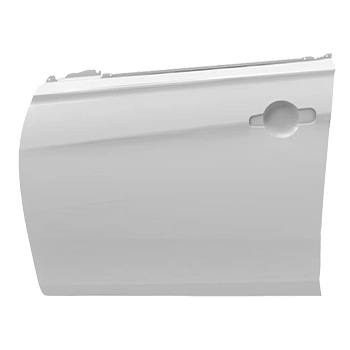
The strength of steel is influenced by several factors, including the presence of carbon and nitrogen atoms, which can form solid solutions within the steel. These atoms can increase the strength of the steel by reducing the movement of dislocations, which are defects in the crystal structure of the metal. However, excessive amounts of carbon can also make the steel brittle.
To further enhance the strength of steel, strengthening elements such as phosphorus and manganese can be added. These elements can form interstitial solid solutions with the iron atoms, leading to an increase in the hardness and strength of the steel.
Once the steel has been processed and formed into its desired shape, it is typically baked at a specific temperature to further increase its strength through a process known as age hardening. During age hardening, the steel is heated to a specific temperature and held there for a period of time. This allows for the precipitation of small particles within the steel that act to inhibit the movement of dislocations, further increasing the strength of the material.
Steel that has undergone this process is commonly used in automotive outer coverings, which require high strength and durability. The organization of the steel is typically ferrite, a type of iron that is relatively soft and ductile, but can be hardened through the addition of other elements and heat treatments.
| Grade | YS(MPa) | TS(MPa) | EL(%) | r | n | BH2(MPa) |
| HC220BD+Z | 220-280 | 340-400 | ≥32% | ≥1.2 | ≥0.15 | ≥30 |
| HC220BD+ZF | 220-280 | 340-400 | ≥30% | ≥1 | ≥0.15 | ≥30 |
Grade: HC220BD+Z, HC220BD+ZF
C(max): 0.06
Mn(max): 1
Si(max): 0.5
The front door outer panel reinforcement plate is a component of the front door of a vehicle. It is a metal plate that is located between the outer door panel and the inner door panel. The purpose of this plate is to provide additional support and rigidity to the outer door panel.
In the event of a collision or impact, the front door outer panel reinforcement plate helps to absorb and distribute the forces of the impact, which can help to minimize damage to the vehicle and protect the occupants inside.

The microstructure of a material refers to the arrangement of its constituent particles or grains, and in this particular case, the material being referred to consists mainly of ferrite and martensite. The martensite structure is dispersed in the ferrite in the form of islands on the substrate, which means that the martensite forms small, isolated regions within the larger ferrite structure.
Dual phase steels are a type of steel that have been specifically designed to have a microstructure consisting of both ferrite and martensite. This microstructure gives them several desirable properties, including a low yield ratio and a high work hardening exponent. The yield ratio refers to the ratio of the yield stress to the tensile strength of a material, and a low yield ratio indicates that the material can undergo more deformation before it reaches its yield point. The work hardening exponent measures how much a material's strength increases as it is deformed, and a high work hardening exponent indicates that the material can be easily formed into complex shapes.
In addition to these properties, dual phase steels also exhibit a phenomenon known as bake hardening, which refers to an increase in strength that occurs when the material is heated and then cooled. This makes them ideal for use in automotive structural parts, as these parts need to be able to withstand high levels of stress and deformation without failing.
| Grade | YS(MPa) | TS(MPa) | EL(%) | r | n | BH2(MPa) |
| HC340/590DPD+Z | 290-370 | ≥500 | ≥27% | - | ≥0.15 | - |
Grade: HC340/590DPD+Z
C(max): 0.15
Mn(max): 2.5
Si(max): 0.6
A car's front door anti-collision beam is an important safety feature designed to protect passengers in the event of a side-impact collision. This beam is typically made of high-strength steel and is integrated into the structure of the car's front doors to provide added protection against side-impact crashes. In a collision, the anti-collision beam absorbs and distributes the force of the impact, reducing the risk of injury to passengers inside the vehicle. The inclusion of this safety feature in modern cars is an important step towards improving overall vehicle safety and reducing the risk of serious injury or death in a collision.

The microstructure of a material refers to the arrangement of its constituent particles or grains, and in this particular case, the material being referred to consists mainly of ferrite and martensite. The martensite structure is dispersed in the ferrite in the form of islands on the substrate, which means that the martensite forms small, isolated regions within the larger ferrite structure.
Dual phase steels are a type of steel that have been specifically designed to have a microstructure consisting of both ferrite and martensite. This microstructure gives them several desirable properties, including a low yield ratio and a high work hardening exponent. The yield ratio refers to the ratio of the yield stress to the tensile strength of a material, and a low yield ratio indicates that the material can undergo more deformation before it reaches its yield point. The work hardening exponent measures how much a material's strength increases as it is deformed, and a high work hardening exponent indicates that the material can be easily formed into complex shapes.
In addition to these properties, dual phase steels also exhibit a phenomenon known as bake hardening, which refers to an increase in strength that occurs when the material is heated and then cooled. This makes them ideal for use in automotive structural parts, as these parts need to be able to withstand high levels of stress and deformation without failing.
| Grade | YS(MPa) | TS(MPa) | EL(%) | r | n | BH2(MPa) |
| HC820/1180DPD+Z | 820-1150 | ≥1180 | ≥6% | - | - | - |
Grade: HC820/1180DPD+Z
C(max): 0.23
Mn(max): 3
Si(max): 1
The front door inner panel is a component of a car's front door that is located on the inside of the door. It is typically made of plastic or metal and covers the door's interior, providing a finished appearance while also protecting the door's internal mechanisms and electrical components.
The front door inner panel can include various components such as the window regulator, power window switches, door handle, lock mechanism, and speakers for the car's sound system.
In addition to its functional components, the front door inner panel can also feature insulation to reduce noise and vibrations from the outside environment, enhancing the comfort of passengers inside the car. The design and materials of the front door inner panel may vary depending on the make and model of the car, as well as the level of luxury and features offered.

Mild steel is a type of steel that is commonly used in a wide variety of applications due to its properties. It can be divided into two categories: ordinary low-carbon steel and interstitial atom-free steel. The microstructure of mild steel is typically ferrite , which is a type of iron crystal that is known for its softness and ductility. Ordinary low-carbon steel may also contain a small amount of pearlite, which is a mixture of ferrite and cementite.
Despite its low strength and hardness, mild steel is prized for its stamping and welding properties. Its low carbon content makes it easy to work with and shape, which makes it a popular choice for a range of industrial applications. Additionally, interstitial-free steel is particularly well-suited for stamping complex, deep-drawn parts such as body side panels, door inner panels, floor parts, and fuel tanks.
| Grade | YS(MPa) | TS(MPa) | EL(%) | r | n | BH2(MPa) |
| DC54D+Z-T | 120-200 | 260-350 | ≥36% | ≥1.8 | ≥0.2 | - |
Grade: DC54D+Z-T
C(max): 0.12
Mn(max): 0.6
Si(max): 0.5
Our company: Hengqiao(Shanghai) International Trading Limited
The company's main business is general GMW standard, Fiat EFE standard, Volvo VDA standard, Nissan NEN standard, Volkswagen VW50065, Ford WSS-M and other standard series of automotive steel.
Looking forward to your inquiry!